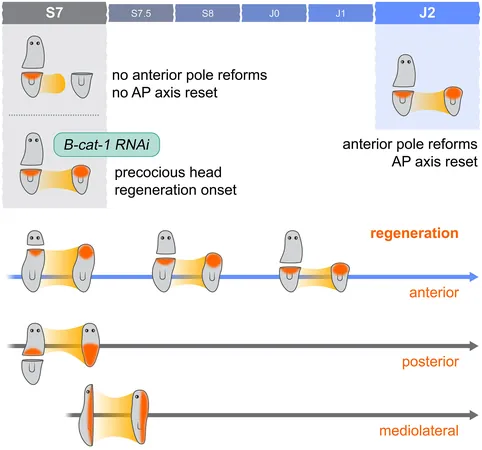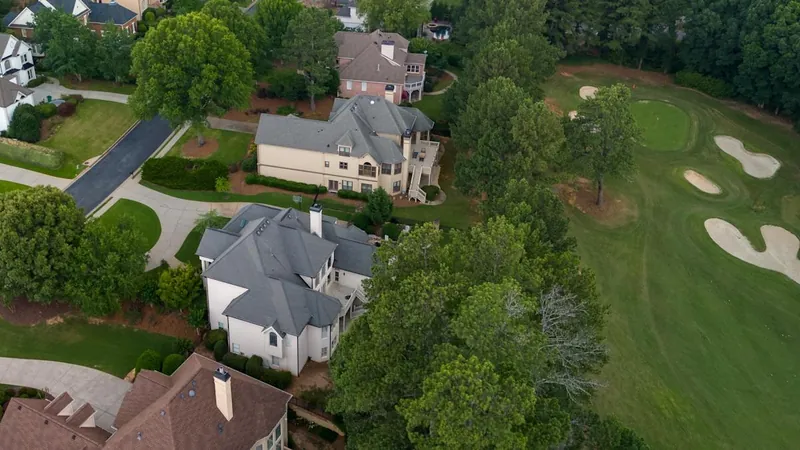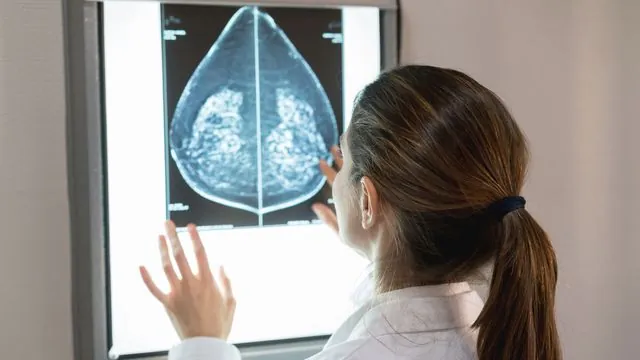
Unlocking the Secrets of Regeneration: How Flatworms Might Hold the Key
2025-04-23
Author: Li
Revolutionary Discovery by Scientists at the National Cancer Institute
Researchers at the National Cancer Institute have made a groundbreaking discovery about Schmidtea polychroa, a remarkable flatworm known for its extraordinary regenerative abilities. Their study reveals that this flatworm's capacity to regenerate damaged tissues develops progressively during its early life stages, hinting that regeneration is not merely an innate trait but a complex process influenced by developmental timing.
The Fascinating World of Regeneration
Regeneration is a biological phenomenon enabling organisms to replace or repair tissues lost due to injury or normal wear. Among aquatic invertebrates, species like hydrozoans and planarians can grow entire bodies from tiny tissue fragments, while certain fish and reptiles can regrow limbs. However, the regenerative prowess of organisms often diminishes with age.
The Age Factor: Insights from the Study
Many species—such as mice and amphibians—exhibit a decline in regenerative capabilities as they age. This phenomenon is tied to factors like stem cell exhaustion and metabolic changes. Interestingly, some species, such as sponges and lizards, can regain regenerative abilities in adulthood, broadening our understanding of cellular regeneration.
How Do Flatworms Do It?
Planarian flatworms maintain their remarkable regenerative potential into adulthood, thanks to adult pluripotent stem cells, known as neoblasts. These cells are activated post-injury and guided by specific signals from surrounding tissues to repair and regenerate.
A Deep Dive Into the Research Findings
The recent study, titled "Developmental onset of planarian whole-body regeneration depends on axis reset," published in Current Biology, meticulously analyzed how and when regeneration manifests in S. polychroa. By bisecting flatworm embryos and juveniles and observing the regeneration process, researchers established critical stages during which regeneration capabilities evolve.
The Importance of Axis Resetting
A pivotal aspect of the study involved the concept of axis resetting. It was found that regeneration of head structures depended significantly on the flatworm’s ability to reset its anterior-posterior axis, a vital step in regeneration. While irradiation-sensitive cells were necessary, they weren’t enough—without proper signaling pathways, regeneration couldn't occur.
A New Understanding of Regeneration's Mechanism
Results suggest that regeneration requires more than just the presence of stem cells; it depends heavily on developmental signals. This challenges the conventional belief that losing regenerative capacity is irreversible.
Implications for Future Research and Regenerative Medicine
With insights from flatworm regeneration, researchers are hopeful about applying this knowledge to less regenerative species, including mammals. Currently, humans exhibit limited regenerative abilities, mainly healing via scar formation rather than restoring original tissue structures. A deeper grasp of these regenerative mechanisms could steer therapeutic advancements toward enhancing tissue repair and regeneration.
The Path Ahead: Toward a Future of Regenerative Medicine
Unlocking the secrets of regeneration in species like the planarian flatworm may one day lead to revolutionary therapies that allow humans to harness their body's natural healing abilities. The goal is to shift from mere survival mechanisms to regenerative processes that restore both function and structure.



 Brasil (PT)
Brasil (PT)
 Canada (EN)
Canada (EN)
 Chile (ES)
Chile (ES)
 Česko (CS)
Česko (CS)
 대한민국 (KO)
대한민국 (KO)
 España (ES)
España (ES)
 France (FR)
France (FR)
 Hong Kong (EN)
Hong Kong (EN)
 Italia (IT)
Italia (IT)
 日本 (JA)
日本 (JA)
 Magyarország (HU)
Magyarország (HU)
 Norge (NO)
Norge (NO)
 Polska (PL)
Polska (PL)
 Schweiz (DE)
Schweiz (DE)
 Singapore (EN)
Singapore (EN)
 Sverige (SV)
Sverige (SV)
 Suomi (FI)
Suomi (FI)
 Türkiye (TR)
Türkiye (TR)
 الإمارات العربية المتحدة (AR)
الإمارات العربية المتحدة (AR)